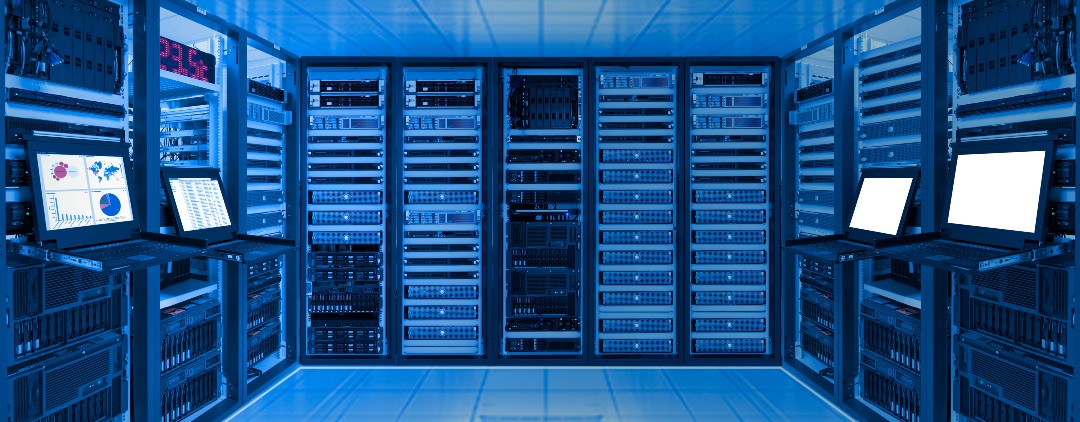The soaring popularity of the cloud brings the spotlight to data centres. The data centre backend powers cloud services. Without efficient data centres, cloud services fall flat. Data centre operations are the sum of the design, infrastructure, and processes centred on the data centre facility. The location and the human factor also affect data centres in a big way. Here is how these core elements ensure seamless data centre operations.
1. Data centre design and architecture
The efficiency of the data centre depends on its physical design. The best design applies the law of physical and respects technological constraints in the design.
A key dimension of efficiency is energy consumption. Data centres worldwide consume about 250 TWh of electricity a year, about 1% of global electricity demand. Data centre architecture optimised for space and ensuring good airflow reduces energy consumption.
- Apply engineering simulation tools before finalising or changing the spatial layout. Any computational fluid dynamics software simulates airflow, power distribution, and heat transfer. This software co-opts information from tracking tools. It also refers to libraries detailing various IT equipment’s power and airflow characteristics.
- Opt for a design that optimises heat and airflow.
2. Data centre location
A corresponding element to the data centre design is the geographical location of the data centre. Data centres in low-temperature regions enjoy natural cooling and as such, cost less to maintain. As a spin-off cost savings, the heat generated by the data centre heats water.
Geographical factors that ensure data centre reliability include:
- Location in flood and earthquake free zones.
- Easy accessibility to fire and emergency services.
Most cloud providers offer redundant services, with data stored across multiple locations. But the disruption of any one data centre can cause temporary outrages and slow down accessibility.
In many cases, regulatory mandates force businesses to opt for data centres in specific geographies.
3. Infrastructure components
Data centres have evolved from monolithic mainframe systems to modern server architectures. The key infrastructure components include servers, CPUs, operating systems, and applications. Of late, server virtualisation and cloud computing power 80% of all data centre traffic.
Of equal importance is support infrastructure, such as
- Locks to secure the data centre physically.
- Racks to host the servers. Rack configurations have a significant bearing on efficiency and cooling.
- HVAC cooling systems.
- Uninterruptible Power Sources (UPS) such as generators and battery banks.
- Utility services infrastructure such as electrical bus bars.
Without such support infrastructure, the primary servers may become dysfunctional or stolen.
Many data centres run inefficiently. Equipment utilisation ratios, at times, fall below 10%. On average, 30% of the data centre servers consume electricity while performing nothing useful.

The root cause of such inefficiency is complexity. Modern data centres feature sophisticated technology. Such data centres need optimisation through Data Center Infrastructure Management (DCIM) tools.
DCIM tools track and manage data centre assets. These tools deliver real-time insights on equipment performance, including temperature, humidity, and airflow.
Advanced data centres make use of RFID tags to track and manage assets. These tags deliver updates when equipment conditions change. The DCIM dashboard pulls information from such tags and offers holistic views of the status of all components. Data centre engineers use such integrated insights to manage the assets.
Data centre equipment stack changes constantly. Many of these changes come unplanned. The latest data centres deploy IoT sensors to cope with the demands. The information logs from IoT sensors offer rich insights into the data centre performance. These insights also help to match computing resources with network traffic flows. Workflow changes at the network’s physical layer enable optimal utilisation of data centre assets.
Today, many networking equipment mirror legacy mainframe systems. Such data centres have closed, proprietary processors, hardware, operating system software, and applications. But most of today’s agile networking capabilities primarily run on open architectures. Efficient data centre operations require asset upgrades.
4. Systems and processes
Managing data centres differs from managing a commercial office. The primary consideration when operating a typical office is cost-benefit analysis. Business operations may tolerate high risks if the cost-benefit analysis favours such risks. But for mission-critical facilities such as data centres, failure is not an option. To optimise data centre systems:
- Rationalise processes. Evaluate each operational task on its effect on availability. Ensure effective work order and spare parts management. Consider the outside pressures, such as government regulations and customer audits.
- Automate processes. The management and operations of a data centre network create a series of complex tasks. But such complexity is not always set in stone. The primary reason for the complexity is error-prone manual processes and opaqueness. Automation and visibility reduce complexity. Prepare a blueprint for automation by syncing sensor data with machine learning algorithms.
- Document the processes for clarity. Documentation management entails keeping critical infrastructure records organised and up-to-date. Observe operations for adherence to the procedures, and log the deviations.
- Promote a “mission-critical mentality” that focuses on risk mitigation. A “mission-critical mindset” prioritises risk mitigation in operational and maintenance activities. It entails proactive handling of all potential threats to system availability and safety.
- Ensure emergency preparedness. Develop emergency procedures for contingencies such as cooling plant or backup generator failure.
- Institute quality management through process standardisation, inspections and audits.
- Secure data through encryption.
5. Human element
The rise of automation notwithstanding, humans are integral to data centre operations. Human employees have to install, maintain, and operate data centre facility systems.
Human error accounts for 70% of data centre outages. The root cause of such human errors is poor operations and maintenance practices.
Eliminating human error requires hiring and developing competent personnel. Seek human resources with expertise in electrical, mechanical, fire, and quality management niches. Invest in training them to update their skills.
A corresponding element is data centre safety. Data centres have electrical, chemical, and mechanical safety hazards. Proper identification and mitigation of such hazards
- Prevents injury to the workforce.
- Preempts disruptions due to shutdowns.
- Saves the data centre from fines imposed by government regulators.
Global data centre infrastructure spending has reached ~$200 billion in 2021. Work-from-home mandates, soaring video streaming services, and the digital-first economy increase the load on data centres. Delivering enjoyable experiences to customers and ensuring operational efficiencies that make the business competitive depends on streamlined data centre operations.
Here are some handy tips towards embracing sustainability and carbon-neutral cloud.












